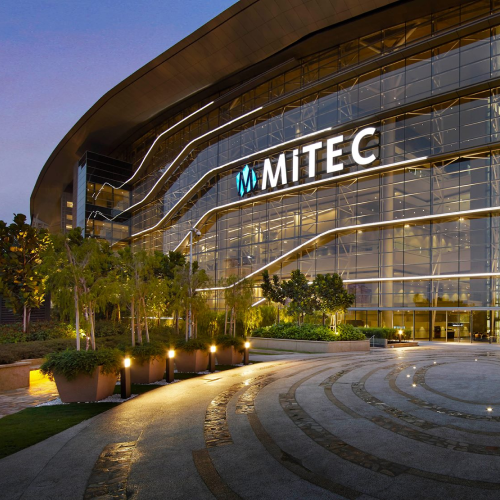No single entity–be it a government, corporation, or educational institution – can singularly shoulder the burdens of preparing the workforce for future challenges. The complexity and scale of workforce transformation necessitate a collective effort from a diverse ecosystem of stakeholders. This ecosystem includes governments, educational institutions, labour platforms, unions, and private enterprises. Each stakeholder brings unique strengths and perspectives, creating a synergy that drives innovation, equity, and scalability in workforce development initiatives.
Governments play a pivotal role in shaping the landscape for workforce transformation. Their responsibilities encompass policy formulation, infrastructure development and ensuring equitable access to opportunities. For instance, the Malaysian government’s establishment of the Ministry of Digital underscores its commitment to leading the nation’s digital transformation and enhancing competitiveness. Such initiatives are crucial for creating an enabling environment where digital skills can flourish.
Moreover, governments can act as orchestrators in the skills ecosystem. Research indicates that a lack of government orchestration is a significant barrier to effective skills development. By building open and comprehensive digital skills platforms, governments can bridge information asymmetry and improve coordination among stakeholders.
Educational institutions must evolve from traditional degree-centric models to embrace skill-centric, lifelong learning frameworks. This shift involves overhauling curricula to include real-world learning experiences, such as apprenticeships and project-based modules. Furthermore, investing in modular, stackable credentials allows learners to acquire and demonstrate competencies incrementally, aligning more closely with industry needs.
The SAP University Alliances program exemplifies this approach by enabling academia to educate the next generation on using intelligent AI-enabled technology, engaging at SAP events, and preparing graduates for the SAP ecosystem. Through hands-on training, students gain practical experience with SAP’s cloud solutions, analytics tools, and ERP systems, making them job-ready upon graduation. Initiatives like this are vital for preparing students not just with theoretical knowledge but with the skills necessary to thrive in the digital transformation era, bridging the skills gap that exists between traditional education and modern business needs.
Labour intermediaries, including unions and third-party training providers, play a crucial role in advocating for workers and providing personalized reskilling pathways. Their involvement ensures that displaced workers are not merely removed from the labour market, instead they are offered structured avenues to re-enter it. This support is vital for maintaining social stability and economic resilience.
The World Economic Forum highlights that some of the most effective workforce transitions occur when industries collaborate, pooling resources, sharing training programs, and creating cross-industry partnerships. Such multi stakeholder collaborations help ensure that workers are prepared for new roles, even in different fields.

The private sector is instrumental in driving innovation and implementing workforce transformation strategies. Companies can invest in upskilling programs, develop partnerships with education institutions, and collaborate with governments to align workforce development with industry needs. These efforts not only enhance organisational competitiveness but also contribute to broader economic development.
For example, the collaboration between Telkomsel and Circles in Indonesia aims to accelerate digital transformation in Southeast Asia. This partnership underscores the importance of private sector involvement in driving technological advancements and workforce development.
By implementing Circles’ advanced SaaS platform, Telkomsel is enhancing its digital services, and increasing operational efficiency across its vast networks, leading to faster response times and a more personalized experience for its customers.
By equipping its staff with the tools needed to adapt to new digital platforms, the partnership also plays a crucial role in workforce upskilling. Collaborations like this are essential for creating scalable digital ecosystems in Southeast Asia, ensuring that both businesses and their workforce remain agile in a rapidly changing digital landscape.

The complexity of workforce transformation demands a holistic, integrated approach that leverages the strengths of all stakeholders. By fostering collaboration among governments, education institutions, labour platforms, and the private sector, we can create a resilient, adaptable workforce capable of thriving in the digital age. Regional and international collaborations will be the cornerstone of shaping future workforce ecosystems. Will you come together to innovate and equip our workforce?
Build a Future Team aggregates a legion of business, impact, and skill partners to establish a new benchmark for social impact in the digital era across Southeast Asia. We are poised to impact 10 million lives through digital workforce transformation.

Lorem ipsum dolor sit amet, consectetur adipiscing elit. Ut elit tellus, luctus nec ullamcorper mattis, pulvinar dapibus leo.

Lorem ipsum dolor sit amet, consectetur adipiscing elit. Ut elit tellus, luctus nec ullamcorper mattis, pulvinar dapibus leo.

Lorem ipsum dolor sit amet, consectetur adipiscing elit. Ut elit tellus, luctus nec ullamcorper mattis, pulvinar dapibus leo.

Lorem ipsum dolor sit amet, consectetur adipiscing elit. Ut elit tellus, luctus nec ullamcorper mattis, pulvinar dapibus leo.

Lorem ipsum dolor sit amet, consectetur adipiscing elit. Ut elit tellus, luctus nec ullamcorper mattis, pulvinar dapibus leo.

Lorem ipsum dolor sit amet, consectetur adipiscing elit. Ut elit tellus, luctus nec ullamcorper mattis, pulvinar dapibus leo.

Lorem ipsum dolor sit amet, consectetur adipiscing elit. Ut elit tellus, luctus nec ullamcorper mattis, pulvinar dapibus leo.

Kompleks MITEC KL Metropolis,
8, Jalan Dutamas 2,
Segambut, 50480 Kuala Lumpur,
Wilayah Persekutuan Kuala Lumpur